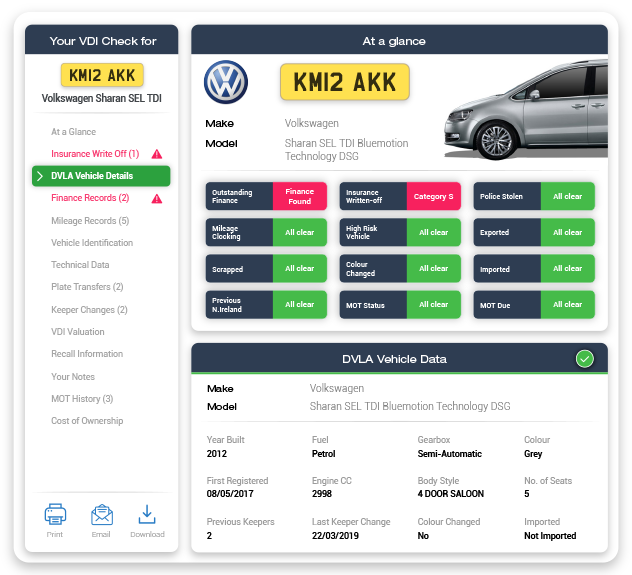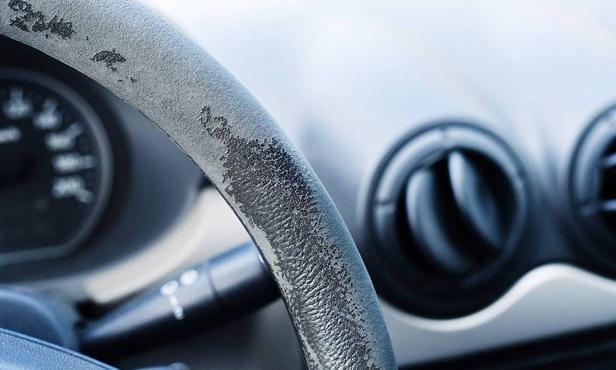With so many makes and models of vehicles, so many dealers to buy from and so many vans for sale online, buying a used van can be a minefield. If you are looking to buy or sell a van in the Windsor, Slough, or High Wycombe area, then one of the most important aspects of this process is checking if the vehicle’s mileage is genuine. High mileage vehicles can often be excessively worn with deteriorated turbos and injectors, while lower mileage vehicles are in greater demand as the engine and gearboxes, at least in theory, should be in better overall condition. A significant problem in the used vehicle industry is that some unscrupulous dealers may falsify a vehicle’s mileage for financial gain. This blogpost will summarise 5 ways to check if a van’s mileage is genuine.
- Perform a vehicle history check online. There are many apps that you can pay for this service, as well as websites online. Some of the most well-known include Experian and HPI Check. Once you pay the fee, you will get a report which will detail, amongst other things, any mileage discrepancies. As mileage is reported on each vehicle by many different parties including DVLA and insurance brokers, mileage discrepancies can occur through human error on vehicle checks. If there is a discrepancy of only a few thousand in a very short time period, or someone has inputted too many zeros at the end of a number, this is unlikely to indicate something malign. Nonetheless, if your van has supposedly only done 30,000 miles and 3 years ago there is a recorded mileage of 85,000, alarm bells should definitely be ringing. Also check the number of owners. If the van you are buying has supposedly only done 25,000 but has 5 owners, something is probably not right and you could potentially be buying a van with mileage that has been falsified.

- Check the MOT history for free. This can be done on the government MOT website. You will be able to see if the mileage has gone down between MOTs. The mileage on a used van should go up roughly the same between MOTs. If one year it goes up by 15,000 and then another year it goes up by 2,000, this is quite suspicious. Also look to see when the vehicle was last taxed. If it has been taxed for 9 months, then ask the dealer why it has been off the road for so long? Has it had a replacement engine fitted?
- Inspect the vehicles service history. Ask the dealer to see the vehicle service records. If the vehicle only has a service book, one way to tell if the service history is genuine is by looking at the handwriting. Are all the services done using the same handwriting and the same type of ink? This is highly suspicious and likely to be falsified because it is unlikely that the same person in a garage has updated the service book using the same pen for a number of years! Do the stamps have ambiguous names like ‘Bosch garage’? This could be a sign that a dealer has falsely stamped up the book. If you are in any doubt, search the garage online to see if they exist. If they do, give them a call to see if they have any record of the vehicle actually being serviced. A much better form of service history is a folder of actual receipts for work done by reputable garages, where you can see exactly what work has been done and give a clearer picture of the vehicle’s history.
- Check the vehicle for excessive wear. If you are buying a van with only 25,000 miles, but the steering wheel is excessively worn and the floor has huge holes in it, this could be a sign that the mileage is incorrect. Do all the doors align properly? Are there any parts of the vehicle that have clearly been painted? Check the engine bay for evidence of a replacement engine. Sometimes, if an engine is bought out of a salvage yard, it will have red markings all over it. You might also see stickers showing a cambelt change at 70,000. If the van in question has only supposedly done 30,000, the van’s mileage has clearly been altered. It is possible that a genuinely low mileage vehicle has just been excessively worn out, but if you spot a fake service history alongside the worn-out vehicle parts, then the vehicle could have a hidden past. If in doubt, leave the van and go to view another one. There are thousands of vans for sale at any one time to buy instead of the one you have doubts about.

- Speak to the vehicle manufacturer. If the van is a VW Crafter, call up your local VW main dealer and ask them if they have any service history on the vehicle. If your van has only done 25,000 miles, but the main dealer tells you that it had a recorded clutch change at 65,000 one year ago, then clearly the van has been clocked. If you have bought the vehicle and you have doubts about the mileage, most main dealers will be able to perform an in-depth analysis of the vehicle and will be able to conclusively tell you if the mileage is genuine. This is likely to cost you only around £200 and if you have only bought the van from a dealer, you will be able to ask them for a refund with the evidence from the main dealer that the mileage isn’t correct.
If you have doubts about your van’s mileage that you have owned for a number of years, or maybe you know it isn’t correct, you will need to declare that the mileage isn’t correct to the next buyer. This can often drastically reduce the van’s value. One option would be to sell the van to sellthevan.co.uk, who will give you a fair price for your van, despite its incorrect mileage or hidden history. They will discover the vans true mileage and sell it on a trade only platform where the real mileage is correctly described.